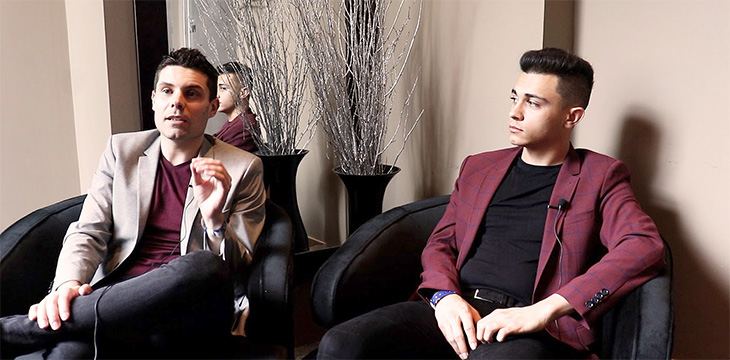|
Getting your Trinity Audio player ready...
|
The Handcash team met after Alex Agut posted a message on Facebook, looking for a developer to help with his new startup. Rafael Jimenez Seibane replied, and since then, Alex says, they have had “a few startups and companies and products together for a few years.” Alex describes himself as “the business guy” with Rafa being “this very methodical developer. And we’ve learnt from each other.”
The two have also worked together in consulting, for Accenture, in artificial intelligence. But “we’ve always been used to working 24 hours a day in a startup,” Alex says and a nine to five job wasn’t enough: “We needed more action.”
So in the summer of 2017, they took another look at Bitcoin, which they’d been following for a couple of years. They moved from the Valencia region to Madrid and got to work.
Their first impression of Bitcoin was that although it was described as “electronic cash” it looked more like “a complicated banking app or something for developers. It was more like the raw material for a consumer app.”
There were three ‘pain points’ for ordinary users: backups; sending money online using addresses (“because we don’t like addresses,” said Rafa); and how to improve in-person payments.
“So we thought why can’t we create a great product that’s focused on sending money by NFC [contactless payments]?” If you could transfer money just by bringing mobile phones close together, that really would be like electronic cash. Four or five months later, they had their first beta version.
The idea was inspired by a Black Mirror story that Rafa and Alex had seen: “in one of the episodes,” said Rafa, “there was a contact app, so that people, just by approaching their phones, could swipe their contact information—it was just a really cool concept.”
Rafa managed to make the idea work for real—and so they were able to exchange contacts, like in the TV show. So then, “we just had to replace information with [Bitcoin] addresses.”
Although we are “just a couple of guys from Spain,” Alex says modestly, “the secret ingredient” is that “we try to focus on one problem at a time ..and try to make that value proposition work.” If they develop a feature that isn’t popular, they’ll drop it, however useful they personally think it would be to users.
One feature of Handcash that Rafa describes as a “beautiful” tradition which has emerged on Twitter is for people to publicise the Handcash handle of a new user and invite other users to send them some BSV. Alex says that people whose handles appear in that way get “a lot of money” and “that creates a bond with our brand.”
“We would like to be the Tesla of money,” says Alex. It’s a comparison they have thought through: “[Tesla] are not trying to create the best electric car,” says Rafa, “they’re trying to create the best car.” “We want to create the world’s best money with Bitcoin,” Alex picks up, “the goal is to create the best money product, but it just happens that the best choice for that is Bitcoin.”
Hear the full interview with Alex and Rafa from Handcash on this week’s CoinGeek Conversations podcast:
You can also watch the podcast video on YouTube.
Please subscribe to CoinGeek Conversations – this is episode 23 of a weekly podcast series. Just search for “CoinGeek Conversations” wherever you get your podcasts, subscribe on iTunes, listen on Spotify or visit the CoinGeek Conversations website.
https://youtu.be/gBb9FSxfyVs

 12-24-2025
12-24-2025 




